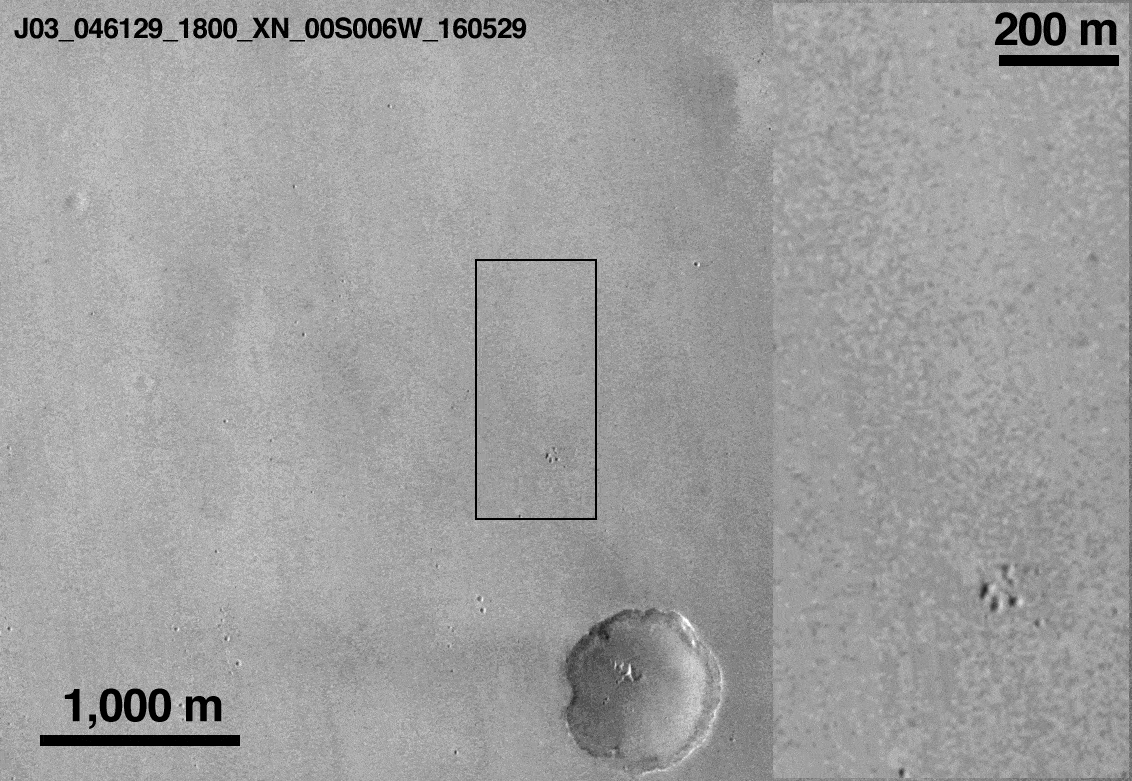
Just one minute before it commenced its descent to the red planet’s surface last week, all communications with ESA’s mars lander dropped and a link couldn’t be established afterward. It was a sad day for the hundreds of scientists, engineers, and staff from the European Space Agency who all expected the worse. Sadly, Schiaparelli seems to have indeed succumbed to a violent death as footage from the crime scene taken by an orbiting NASA spacecraft suggests.
NASA’s Mars Reconnaissance Orbiter (MRO) captured several photographs that show a bright feature that uncannily resembles a parachute and a dark patch that seems to be the lander’s crash site.
“Estimates are that Schiaparelli dropped from a height of between 2 and 4 kilometers [1.2 to 2.5 miles], therefore impacting at a considerable speed, greater than 300 km/h [186 mph],” the ESA wrote on its website.
“The relatively large size of the feature would then arise from disturbed surface material,” they added. “It is also possible that the lander exploded on impact, as its thruster propellant tanks were likely still full. These preliminary interpretations will be refined following further analysis.”
The dark patch is only 3.4 miles west of Schiaparelli’s intended landing site, at Mars’ Meridiani Planum, and well within the 62 miles long by 9 miles wide crash ellipse calculated by scientists.
MRO used its low-resolution CTX camera to take these snapshots, but this week when it will make its next flyby the orbiter will use its High Resolution Imaging Science Experiment (HiRISE) camera which should give us a much better look.
Schiaparelli and the Trace Gas Orbiter (TGO). an orbiting spacecraft run by Russia’s Roscosmos space agency, travel in tandem to the red planet and separated shortly before the lander was supposed to make its soft landing. The TGO also had its watershed moments when it had to make a delicate 139-minute-long maneuver to lock itself into Mars’ orbit. All went well, and the TGO is now circling the planet every 4.2 days on a highly elliptical path. Its mission will be to study methane signatures, a low-abundance gas which is of particular interest for astrophysicists since it’s considered a proxy for life.
As for Schiaparelli, the lander was supposed to test technology that is destined to help a life-hunting rover safely touch down on Mars in 2021. At least ESA now knows how not to do it.






